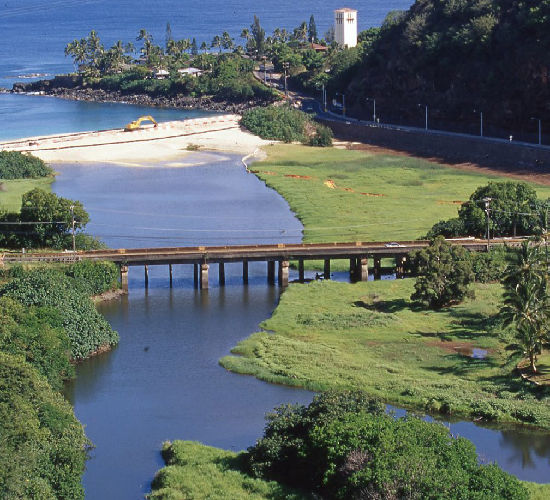During this current precarious Covid-19 season we, Waimea Valley staff, are staying positive for the preservation of this sacred ahupua’a and what it stands for. Since 2008, the non-profit Hi’ipaka LLC has assumed the responsibility to preserve and perpetuate the plants and culture of Waimea Valley, the center of so much history, as it was presided for centuries by the Kahuna Nui, the high priests, who were direct descendants of the line of Pa’ao. Today we are asking you, our community, to learn more about the history and work put into the Valley and to keep our doors open for you, us, and future generations.
Waimea Valley Botanical Garden was created in 1973 by the Charles Pietsch family, then known as the Waimea Arboretum and Botanical Garden. Detailed collection data that came with every plant, seed, or cutting has been recorded into a database system. Today it is a living museum displaying over 5,000 kinds of plants representing over 200 plant families and 1000 genera. Over the years, field botanists, conservationists, and plant collectors, have deposited their treasured findings, often rare and endangered specimens, here at Waimea Valley to provide beauty for our guests and preserve precious germplasm for future research and habitat restoration. Almost every plant has a story to tell. In the lower valley, many native trees such as the wiliwili, ohe-makai, alahe`e and lama existed, and the gardens were planted around them. Further up on the ridges and in the gulches, pockets of almost pristine mesic forest have been surveyed and one of the rarest species found is the endangered nioi, Eugenia koolauensis, related to the mountain apple.
Keith Woolliams, a graduate of England’s RBG, Kew School of Horticulture masterminded the design of Waimea Valley in the 1970s and 80s. Over 41 separate gardens are themed according to plant family, genus or eographical origin. Some represent the flora of individual island groups like Fiji, Guam, Lord Howe, the Mascarenes, the Seychelles, Madagascar Japan’s Ogasawara Islands, and six gardens are devoted to the flora of the Hawaiian Islands. Two large gardens feature diverse plants of Central and South America, and the Malesian Floral Region Garden shows many wild- ollected plants from Borneo, New Guinea, the Philippines and Indonesia. Many palms, gingers and heliconias on display at Waimea are rare in cultivation and can only be seen here and in their distant places of origin. Of special interest are the Hawaiian ethnobotanical gardens of canoe plants: Hawaiian named heirloom crop varieties of taro, banana, sweet potato, and sugar cane as well as dye plants and the medicinal garden.
You have the power to help us keep the botanical gardens, cultural sites, and conservation lands intact. We cannot do it without you. Your visits, purchases of annual family, individual or lifetime passes, and social media posts about your positive experiences at Waimea Valley all contribute to the Valley’s survival. Please help spread the word on our donation programs such as the corporate annual pass for companies and organizations. This is a great way to show your employees and staff your appreciation through these trying times. A special tribute to a loved one by purchasing a custom made dedication bench made from wood harvested in the Valley, or dedication of a garden is an exceptional way to remember their life in a beautiful and unique setting. There are multiple ways for you to help and you can choose which the best is for you by visiting www.waimeavalley.net/donate.
Please come and experience Waimea Valley, we hope you leave with a new appreciation and knowledge of this wondrous place, affected by its beauty and culture. We hope you will have absorbed the serenity of this sacred place.



